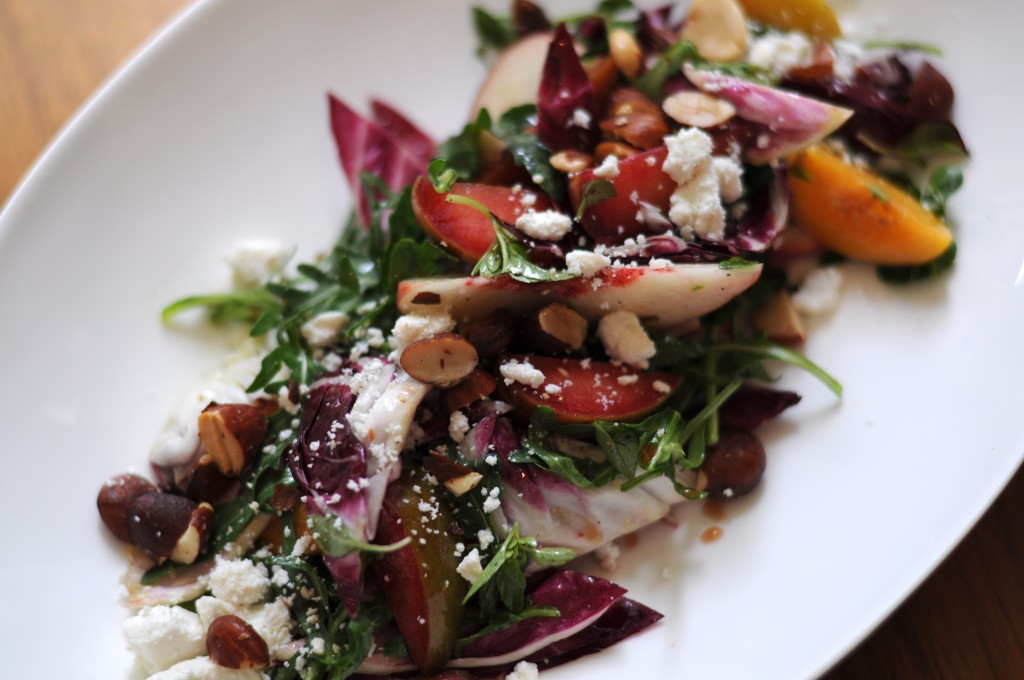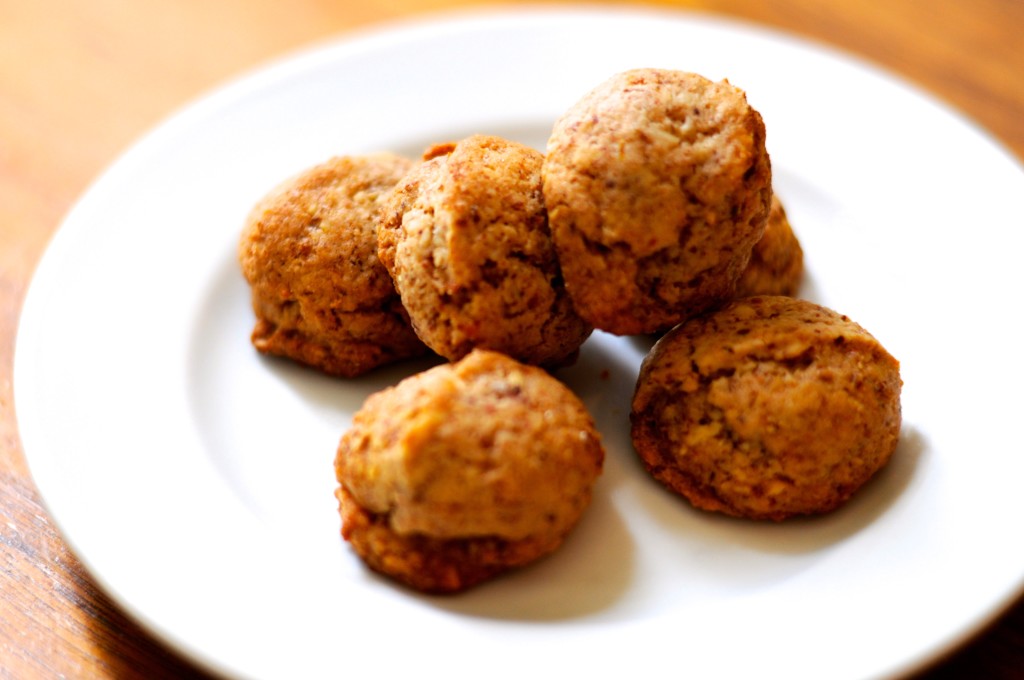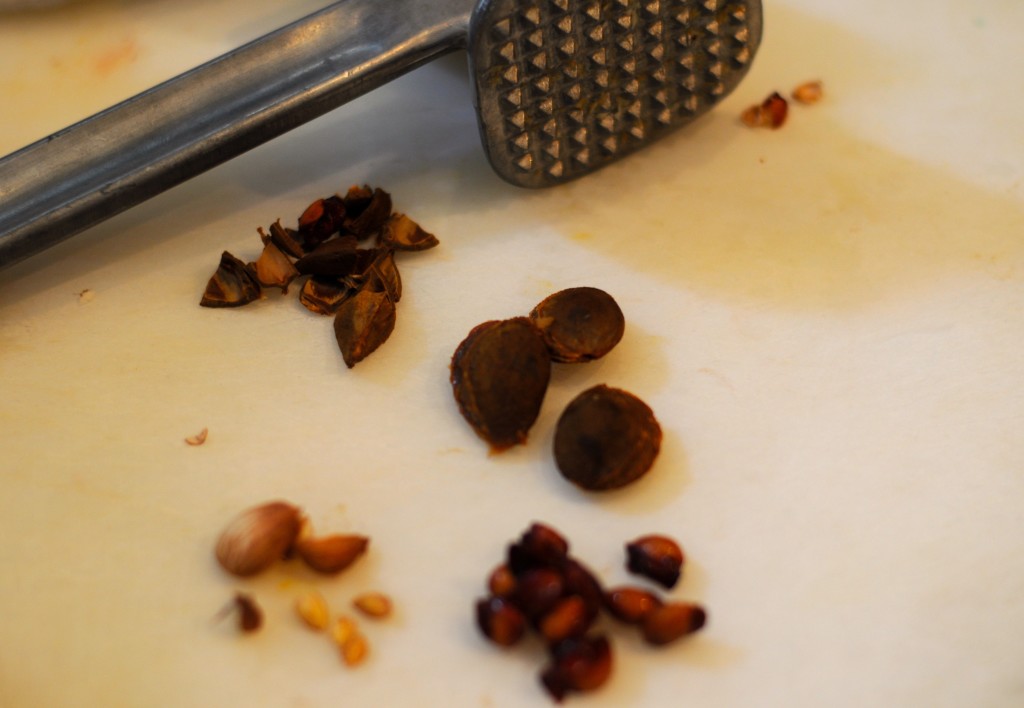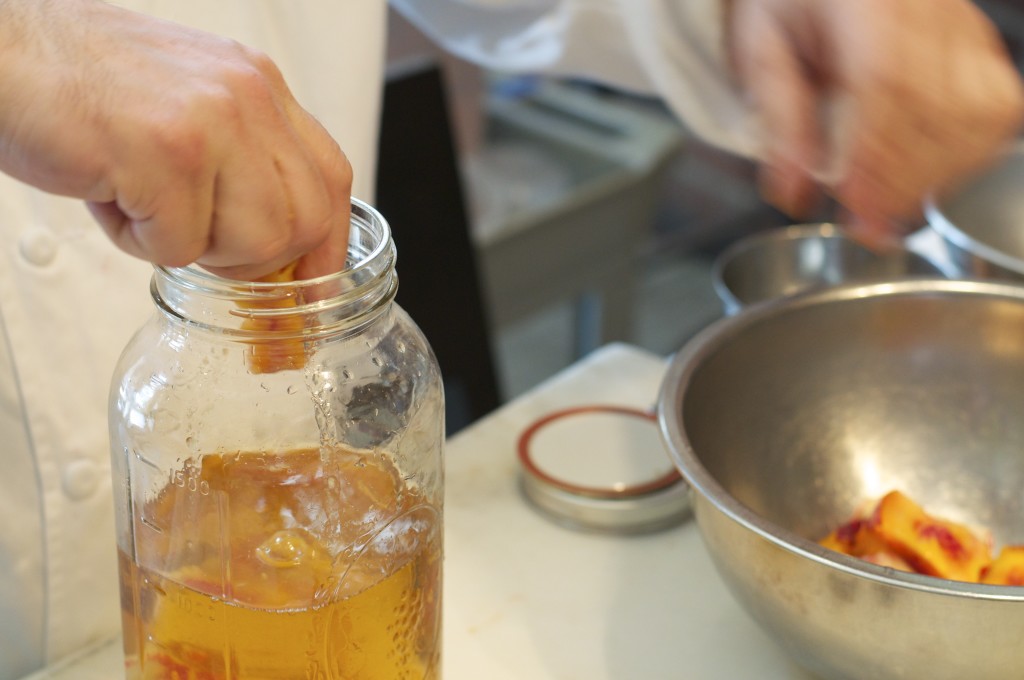Whole ingredient cooking: Perbacco's Staffan Terje on Stone Fruit




Few things get me more giddy about summertime’s bounty of bright produce than stone fruit.
At Perbacco, peaches, plums and apricots of all shapes and sizes are featured in more forms than one, adding layers of flavor and texture that you might not have known were possible — flavors that seem complex, yet are so simple to develop.
While the longstanding Italian restaurant has developed a reputation for perfectly executed seasonal dishes, executive chef Staffan Terje is becoming recognized for his obsession with using every part of every ingredient so that absolutely nothing is wasted. In the case of stone fruit, this includes making use of overripe or bruised fruits, as well as the pit of every peach, plum, apricot and cherry.
“What people don’t realize is that this stuff has so much sugar, so it’s going to deteriorate quickly,” Terje says. “People buy all this beautiful stuff at the farmer’s market and it goes bad before they know it. Then they throw away a lot of perfectly good stuff. But they don’t have to. There’s so much more that you can do with it.”
For starters, over-ripe fruit can easily be mashed and made into a jam or chutney by slowly cooking down the fruit over a low flame on the stovetop with a little bit of sugar and water. Over-ripe fruits can also be macerated in a jar with simple syrup for a couple of weeks to be used as a sweetener for desserts, salads or mains that feature the flesh of the fruit.
As for the pits, they can be cracked, toasted and used to infuse baked goods and dressings with their flowery almond flavor. Terje’s favorite use of stone fruit pits includes vinegars infused with the pits’ inner almonds and Ameretto cookies made from pits ground with sugar. He also uses the shell of the pits as a base to smoke meats and fish.
Perbacco’s menu is currently filled with dishes that feature apricots, peaches, plums and cherries, including a dry aged duck breast with stone fruit radicchio salad and pan roasted porcini and peaches. There’s also roasted stone fruit and olive oil cake with peach sorbetto and a basil-white chocolate semifreddo with cherries and dark chocolate ganache. Most of these dishes use the whole ripe fruit, layered with syrup or vinegar infused with the pits and overripe fruits, which combined build layers of flavor and allow each dish to taste like the entire fruit — not just part of it.